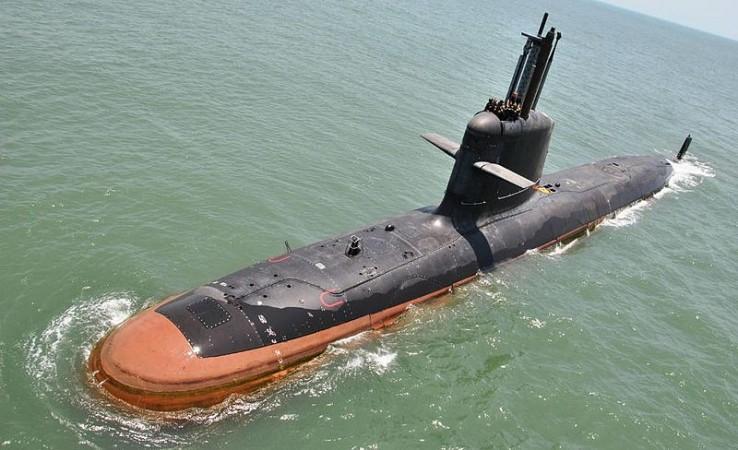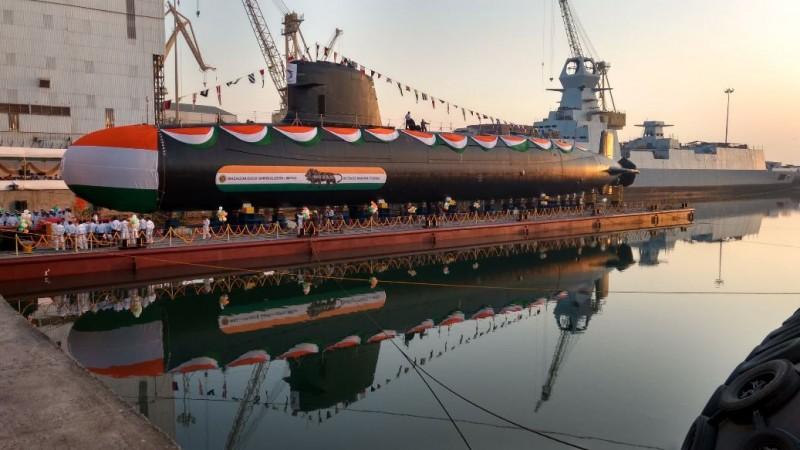In what is said to be its largest ever underwater defence deal, India has initiated the process to acquire six new submarines that are expected to significantly reinforce the country's submarine strength. As part of the long-delayed deal, India's Ministry of Defence has issued the Request For Information (RFI) to Russia, France, Germany, Japan, Sweden and Spain to build the submarines with an estimated Rs. 70,000 crore ($10.9 billion) together with an Indian shipyard.
The mega submarine project, titled Project 75 India (P-75I), has been languishing government files ever since the government first approved it in November 2007. However, it will be the first big project under the recently approved Strategic Partnership model the Indian government initiated to promote private sector participation in defence manufacturing.
The RFI was issued last week to six foreign manufacturers, including France's Naval Group, Germany's ThyssenKrupp Marine Systems, Japan's Mitsubishi Heavy Industries and Kawasaki Heavy Industries, Spain's Navantia, Sweden's Saab and Russia's Rosoboronexport. These original equipment manufacturers (OEMs) will have to respond to the RFI by September 15, before the Indian Navy formulates Naval Staff Qualitative Requirements and a formal Request For Proposal (RFP) is issued to them.

IHS Jane's Defence Weekly, which valued the deal at over Rs. 50,000 crore ($7.8 billion), said that the RFI asked all the OEMs to provide operational details of their respective submarines which are equipped with air-independent propulsion (AIP) systems and anti-surface, anti-submarine and land-attack capabilities.
"It may take around two years for the original equipment manufacturer (OEM)-Indian shipyard combine to be down-selected. Moreover, the first new submarine will roll out only seven to eight years after the final contract is inked. But the aim is to fast-track the entire process," a defence ministry official told the Times of India.
The Project 75 India submarines
The P-75I submarines are expected to be more advanced and lethal than the Project 75 Kalvari-class submarines that are likely to be inducted soon. The AIP systems in the new submarines will help them stay submerged for a longer duration while there will also be an advanced detection range and a superior combat management system, in addition to better sensors for optimum performance.

When it comes to the weapon system, the P-75I submarines are likely to have both vertically launched BrahMos for the sea and land targets as well as tube-launched torpedoes for anti-submarine warfare. The P-75I submarines are also expected to be bigger than the 1800-ton Scorpene submarines being built by Mazagon Docks Limited in Mumbai.
India's current submarine strength
Global Firepower, an independent US-based think tank, said that India has 15 submarines while China has as many as 56 submarines. Pakistan, on the other hand, has eight submarines in service.
Media reports, meanwhile, said that the Indian Navy currently has 13 conventional submarines, including the indigenous Arihant-class nuclear submarine and one Russian Akula-class submarine operating on a lease.

However, for effective deterrence against China and Pakistan, the Indian Navy needs to have 18 diesel-electric submarines, six nuclear-powered attack submarines (called SSNs) and four nuclear-powered submarines with long-range nuclear-tipped missiles (SSBNs), the TOI reported.
India issued the RFI to the six global manufacturers just over a week after it kicked off the Malabar exercise, a joint 10-day naval exercise with the US and Japan, in the Bay of Bengal. Besides India's aircraft carrier INS Vikramaditya, Japan's largest warship JS Izumo and the US super-carrier Nimitz, a number of other frontline ships, submarines and fighter jets of the three nations participated in the drill.
China, on the other hand, recently claimed that it had developed an advanced magnetic detection technology, capable of finding hidden metallic objects like minerals and submarines.











